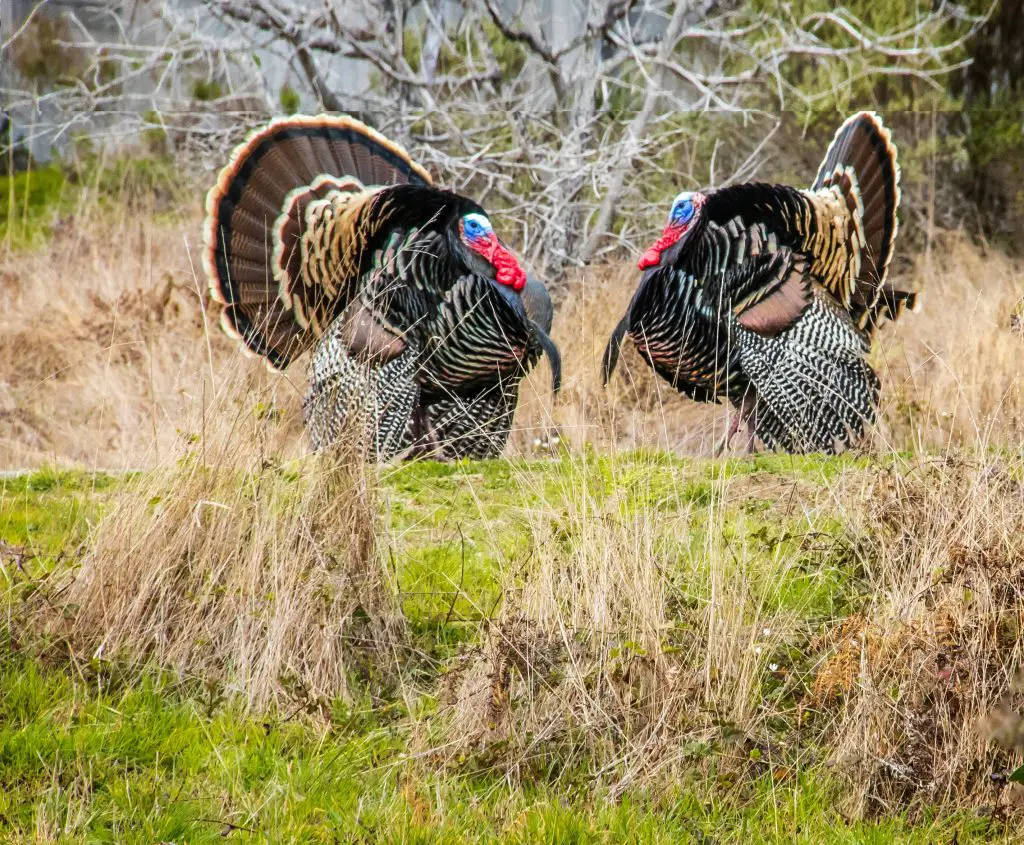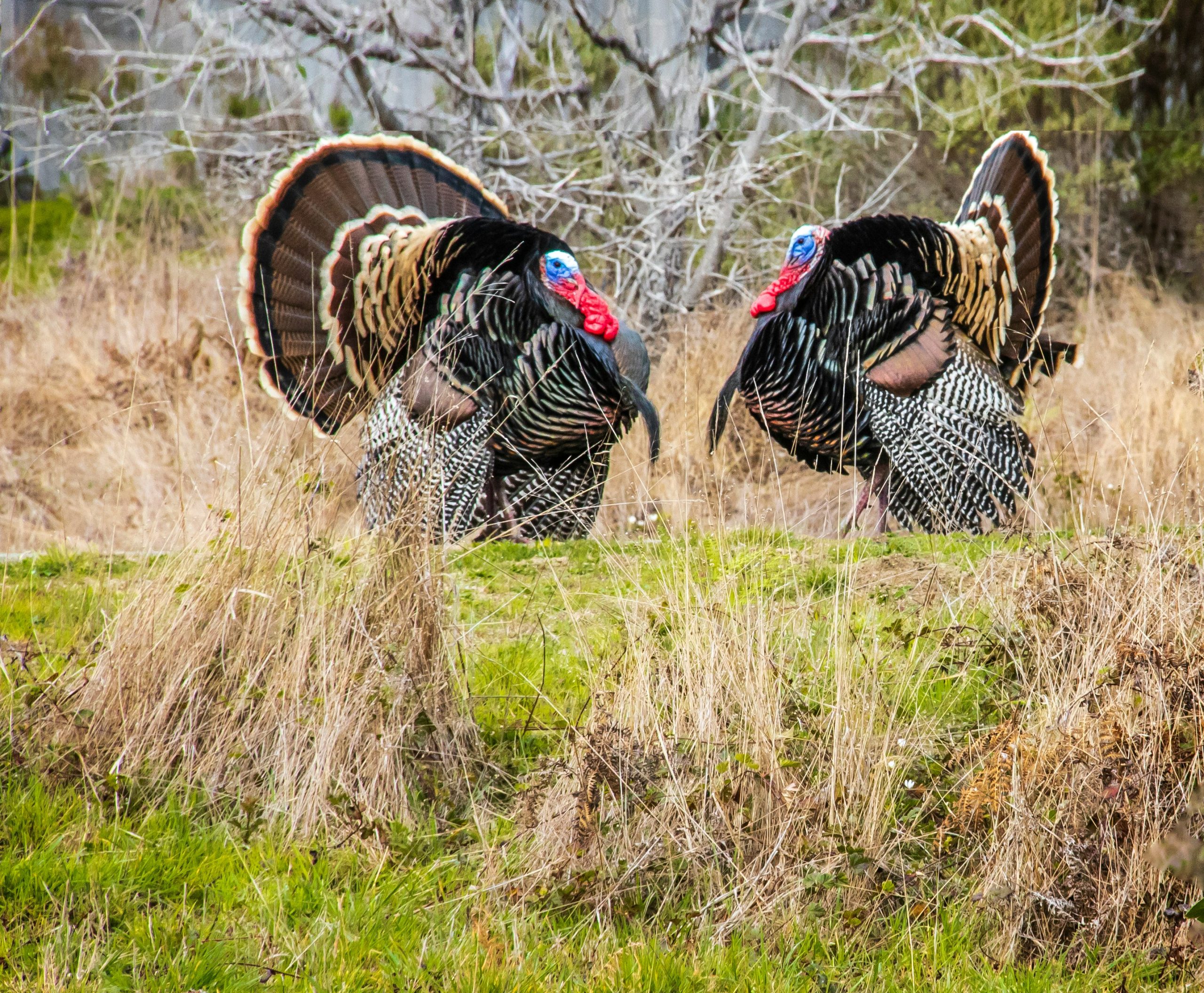A group of turkeys can go by many names, beyond a big Thanksgiving dinner (wink!). In most situations, it’s acceptable to call a group of turkeys a flock of turkeys. But in some situations, you can call the group a rafter of turkeys or a gang of turkeys.
I ran into this question myself last year when a group of wild turkeys scared the living daylight out of me in the woods. I hear some rustling around, which could mean anything is in there, but then multiple turkeys stampeded right by me. So, I naturally wanted to know how to properly term the group that accosted me on a regular walk through the woods.
This guide answers the question: What is a group of turkeys called?
Terms for a Group of Turkeys
The English language has several collective nouns intended to describe a group of turkeys. A few include:
- Flock of turkeys: A general term used to describe a group of turkeys, commonly seen in the fall and winter when they gather for safety and food.
- Rafter of turkeys: The official and traditional term for a group of turkeys, often used in more formal or wildlife contexts.
- Gang of turkeys: A casual or colloquial term, sometimes used when referring to a group of male turkeys (toms) traveling together.
- Brood of turkeys: Refers specifically to a group of young turkeys (poults) following their mother.
- Gaggle of turkeys: Although more commonly used for geese, this term is occasionally applied to a noisy or disorderly group of turkeys.
- Mob of turkeys: An informal term used when turkeys are seen moving or feeding in a large, chaotic group.
If talking about a bunch of young turkeys, you can call that collection of juveniles a brood.


When Do Turkeys Gather in Groups?
Turkeys are social birds that often form groups, especially during specific seasons and for particular purposes. Throughout most of the year, wild turkeys are separated by gender. Hens (females) and poults (young turkeys) typically travel together in small flocks, while toms (males) form bachelor groups. However, their grouping behavior changes based on the time of year and their biological needs.
- Fall and Winter: As the weather cools, turkeys begin to gather in larger flocks for protection and easier access to food. These winter flocks can consist of dozens of birds, helping them stay safe from predators and conserve energy during the colder months. In Florida, I often see groups with hens and young turkeys in the woods throughout the winter.
- Spring: During mating season, which typically begins in early spring, turkeys shift their social patterns. Toms leave their bachelor groups and begin displaying individually or in pairs to attract hens. The hens, meanwhile, remain in larger groups until they begin nesting.
- Summer: After nesting, hens and their poults form family groups. These family flocks often merge with others, creating large groups of hens and young turkeys. Toms, on the other hand, often return to smaller bachelor groups.
Overall, turkeys are most likely to be seen in large groups during the fall and winter, while spring and summer bring more dispersed patterns due to mating and nesting behaviors.
Males vs. Female Turkeys: Correct Terms
When discussing an individual turkey, it’s appropriate to call males and females different terms based on their ages. Here’s a breakdown:
- Tom: An adult male turkey, known for its larger size, iridescent feathers, and distinctive fan-shaped tail used during displays.
- Jake: A juvenile male turkey, typically under one year old, recognizable by its smaller size and shorter beard.
- Hen: An adult female turkey, generally smaller and less colorful than the males, with brownish feathers for camouflage.
- Jenny: A juvenile female turkey, usually under one year old, still growing and developing adult features.
- Poult: A young turkey chick, newly hatched and highly vulnerable, often staying close to the hen for protection.
- Gobblers: A general term for male turkeys, typically used when referring to adult males but sometimes applied broadly to all males.
- Snoodling: An informal or playful term used for baby turkeys, referencing their small snoods (the fleshy protuberance on their beak), though not an official term.
Final Take: What Is a Bunch of Turkeys Called?
The right term for a bunch of turkeys varies based on the situation. But, generally, it’s fine to call a group of turkeys a flock. In domesticated situations, a rafter might be more appropriate.
